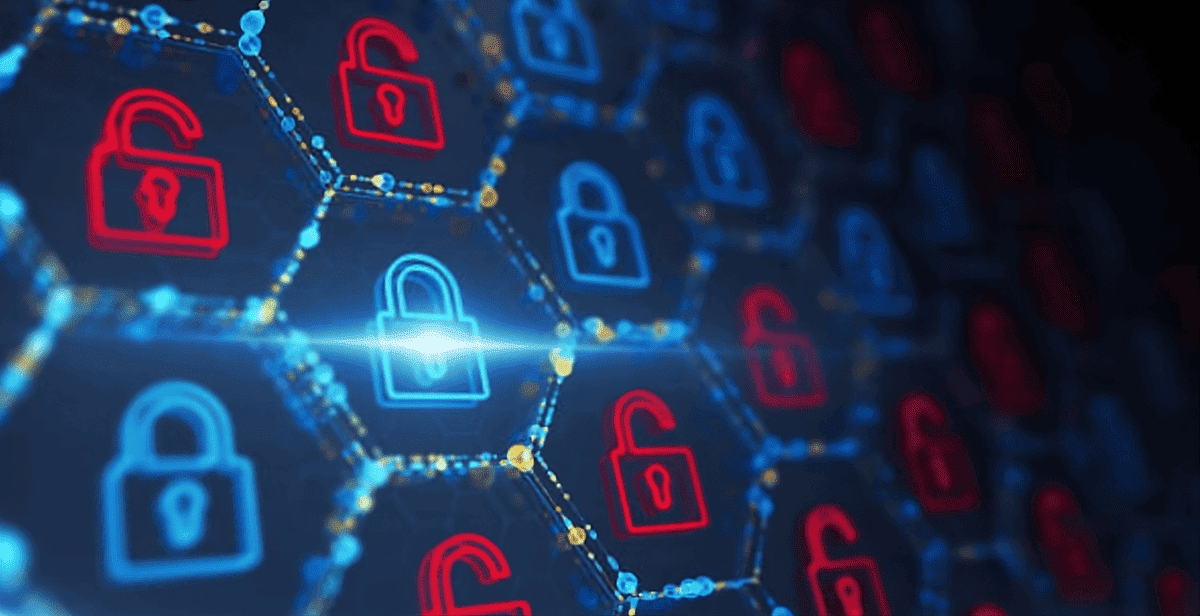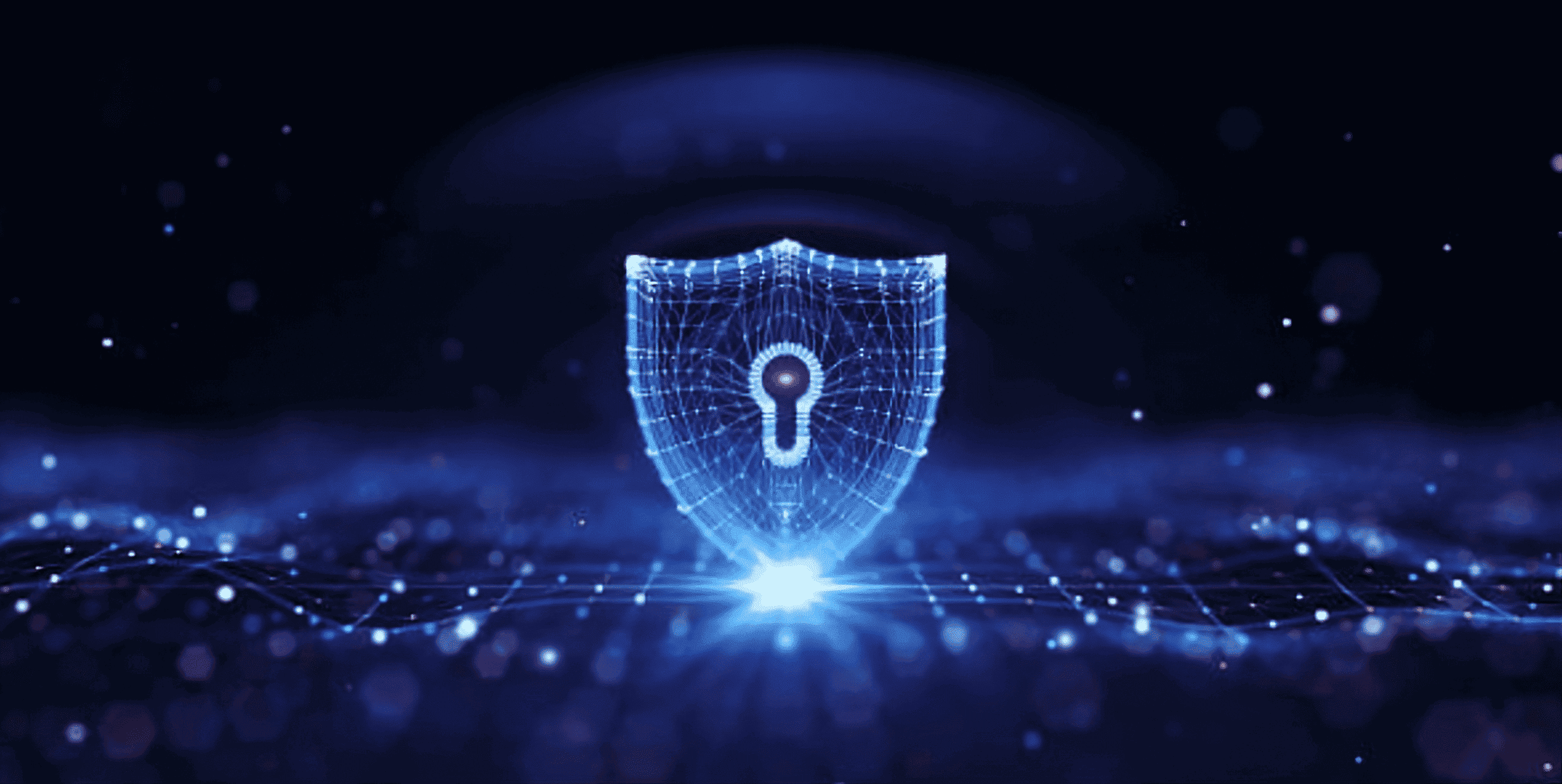
Data Protection and Information Security
In today's digital world, data has become the most valuable business asset. Protecting this data from cyber threats, leaks, and losses is not just a technical task, but a key element of a company's development strategy. VHost Consulting offers comprehensive information security solutions tailored to your business needs.
Our experts develop and implement multi-layered protection systems that provide reliable protection against modern cyber threats:
- Antivirus protection for workstations and servers
- Intrusion detection and prevention systems (IDS/IPS)
- Encryption of critical data
- Implementation of multi-level access control systems
- Protection against ransomware and targeted attacks
- Vulnerability analysis and penetration testing
- Development of information security policies
- Employee training on cybersecurity rules
We help organizations of all sizes create a reliable data protection system that meets both business requirements and regulatory standards, ensuring business continuity and protecting the company's reputation.
Key Data Protection Areas
Comprehensive Infrastructure Protection
Development and implementation of a multi-layered protection system, including perimeter network security, internal systems, endpoints, and cloud resources. We create layered defenses that provide maximum security while maintaining the usability of IT systems.
Monitoring and Incident Response
Implementation of security monitoring systems for continuous tracking of suspicious activity in the network. Creating procedures for rapid response to security incidents, including recovery plans after attacks and mechanisms to minimize damage.
Sensitive Data Protection
Development and implementation of solutions for identifying, classifying, and protecting confidential information. Application of encryption technologies, data masking, and access control to prevent unauthorized access to sensitive information.
Access and Identity Management
Implementation of identity and access management (IAM) systems that provide strict control over access to corporate resources based on the principle of least privilege. Configuration of multi-factor authentication for critical systems and confidential data.
Protection against Modern Cyber Threats
Deployment of specialized solutions to protect against targeted attacks, ransomware, phishing, and social engineering. Use of advanced technologies, including behavioral analysis and machine learning, to identify complex and previously unknown threats.
Modern Cyber Threats
Understanding current threats is the first step to effective protection
of organizations experienced successful cyberattacks
days - average time to detect a data breach
dollars - average cost of a data breach
of small businesses close after a serious cyberattack
Ransomware
Encrypts your data and demands a ransom for its recovery. Modern variants also steal information before encryption, threatening to publish it if payment is not made.
Social Engineering
Psychological manipulation to obtain confidential information or access to systems. Includes phishing, pretexting, and business email compromise (BEC) attacks targeting executives.
Advanced Persistent Threats (APT)
Long-term, complex attacks using advanced techniques to penetrate a company's infrastructure and stealthily steal data over extended periods.
Insider Threats
Malicious actions by employees or accidental errors leading to data leaks or system disruptions. Often harder to detect due to legitimate access.
Cloud Service Vulnerabilities
Misconfiguration of cloud resources or vulnerabilities in services leading to unauthorized access to company data in the cloud.
Mobile Device Threats
Attacks on employees' smartphones and tablets that provide access to corporate data and resources through malicious applications and vulnerabilities.
Our Data Protection Solutions
Comprehensive approach to securing your information
Comprehensive Endpoint Protection
Modern EDR (Endpoint Detection and Response) solutions that combine antivirus protection with mechanisms for detecting and responding to complex threats. Protection against ransomware, detection of suspicious activity, and automated incident response.
Intrusion Detection Systems
Implementation of IDS/IPS systems for monitoring network traffic and detecting suspicious activity. Real-time attack blocking, identification of anomalies in user and system behavior, protection against known and unknown threats.
Data Encryption
Comprehensive solutions for encrypting confidential information both at rest and in transit. Protection of files and databases, email encryption, protection against leaks in case of device loss or unauthorized access.
Access Management
Implementation of IAM (Identity and Access Management) systems for controlling access to corporate resources. Multi-factor authentication, single sign-on (SSO), privileged account management, and automation of access management processes.
Data Loss Prevention
DLP (Data Loss Prevention) solutions to prevent leakage of confidential information. Control of data transmission channels, content analysis, monitoring of user actions, and blocking of suspicious operations.
Security Monitoring
Implementation of SIEM systems for centralized collection and analysis of security events. Prompt incident detection, correlation of events from various sources, automated response, and incident reporting.
Data Protection System Implementation Process
Methodology for building an effective information security system
Security Audit
Comprehensive assessment of the current security state, identification of infrastructure vulnerabilities, analysis of existing protection measures, and determination of information assets requiring special protection.
Strategy Development
Creating a comprehensive security strategy based on audit results. Setting priorities, selecting technologies and solutions, developing information security policies and procedures.
Solution Implementation
Deployment of selected technologies and protection tools, configuration of security systems, integration with existing infrastructure, and parameter optimization to minimize impact on business processes.
Testing
Verifying the effectiveness of implemented protection measures through penetration testing, attack simulation, and evaluating system responses to threats. Identifying and addressing discovered deficiencies.
Employee Training
Conducting cybersecurity awareness programs for all categories of employees. Training on safe data handling practices and social engineering recognition.
Monitoring and Management
Setting up continuous security monitoring systems, creating incident response procedures, and regularly updating protection systems to counter new threats.
Documentation
Creating a complete set of information security documentation, including policies, procedures, instructions, and incident response plans for all levels of the organization.
Regular Audit
Conducting periodic checks of the security system's effectiveness, analyzing new vulnerabilities and threats, adapting protective measures to changing conditions and business requirements.
Benefits of Our Data Protection Solutions
Key advantages of implementing a comprehensive information security system
Comprehensive Protection
Multi-layered security system providing protection against a wide range of threats - from viruses and malware to targeted attacks and insider threats.
Business Continuity
Minimizing downtime risks due to cyberattacks or data leaks. Protection of critical business processes and ensuring rapid recovery after incidents.
Risk and Cost Reduction
Significant reduction of financial and reputational risks associated with cyber incidents. Reduction of potential losses from data leaks and system downtime.
Regulatory Compliance
Ensuring compliance with regulatory requirements for data protection (GDPR, PCI DSS, etc.), which is critical for companies operating in international markets or handling personal data.
Management Optimization
Improvement of information security management processes through centralized monitoring, automation of routine operations, and simplification of security system administration.
Enhanced Trust
Building trust with customers, partners, and investors through reliable protection of their data and transparency of information security processes.
Frequently Asked Questions
Answers to common questions about data protection
1. For data encryption in transit – TLS 1.3 and higher protocols, providing secure connection between client and server with modern encryption algorithms.
2. For data encryption at rest – full-disk encryption (such as BitLocker, FileVault, VeraCrypt) to protect all data on devices; file or database level encryption to protect specific data sets.
3. For confidential message protection – end-to-end encryption technologies, where data is decrypted only on end users' devices.
4. For encryption key management – specialized systems (Hardware Security Modules, Key Management Services) providing secure storage and management of cryptographic keys.
It's important to use modern standardized encryption algorithms (AES-256, RSA-2048 and higher, ECC) and regularly update encryption systems in accordance with current recommendations from security experts. The effectiveness of encryption also depends on proper implementation and key management – even strong algorithms won't provide protection with weak encryption key management.
Data Protection in the Era of Digital Transformation
In today's business landscape, where digital technologies are becoming the foundation of competitive advantage, data protection is transforming from a technical issue into a strategic imperative. Information – from customers' personal data to intellectual property – is becoming the main asset, and its loss or compromise can lead to catastrophic consequences for business.
Comprehensive Approach to Information Protection
Effective data protection requires a comprehensive approach that takes into account both technical and organizational aspects. VHost Consulting specialists view information security as a continuous process that includes risk identification and assessment, implementation of multi-layered protective measures, constant monitoring, and prompt incident response.
Our approach is based on the principle of defense in depth, which creates several levels of security protecting critical data. This ensures protection even if attackers breach one of the security perimeters.
Adapting Protection to Industry Specifics
Different industries have their own specifics regarding both security risks and regulatory requirements. Our experts develop individual data protection solutions that take into account the peculiarities of a specific industry.
For financial organizations, the priority is protecting transaction data and preventing fraud, which requires the implementation of specialized anomaly detection systems and strict access control. In healthcare, the confidentiality of patients' personal medical data is critically important, requiring reliable encryption and access control considering the roles of various medical specialists.
Manufacturing enterprises need protection for technological processes and intellectual property, which often requires network segmentation and isolation of production systems from the corporate network. For retail and e-commerce, key issues are protecting payment card data and customers' personal information, which requires compliance with PCI DSS standards and implementation of data leak prevention systems.
Human Factor in Data Protection
According to statistics, more than 80% of information security incidents are related to the human factor – from careless actions to deliberate insider threats. Therefore, an important part of our approach to data protection is working with the company's personnel.
We develop and conduct cybersecurity awareness programs tailored to different categories of employees – from basic security rules for all staff to specialized training for IT specialists and managers. The effectiveness of these programs is confirmed by regular testing, including phishing attack simulations and other methods of assessing employees' readiness to counter social engineering.
Additionally, we help organizations implement effective access management procedures based on the principle of least privilege, and user activity monitoring systems for early detection of potential insider threats.
Regulatory Compliance
Modern data protection legislation is becoming increasingly stringent, imposing serious obligations on organizations to ensure information security. Our experts help clients navigate the complex landscape of regulatory requirements and implement protection measures that ensure compliance with current standards.
We have experience working with various regulatory requirements, including GDPR, PCI DSS, HIPAA, ISO 27001, SOX, and industry standards. Our team helps not only implement the necessary technical measures but also develop documentation, policies, and procedures required to confirm compliance during checks and audits.
Technological Trends in Data Protection
The cyber threat landscape is constantly evolving, requiring continuous development of protection technologies. Our specialists closely follow the latest trends in information security and integrate advanced technologies into solutions for our clients:
1. Artificial Intelligence and Machine Learning for identifying complex and previously unknown threats based on analysis of user and system behavior.
2. Zero Trust Security – a security model based on the principle "trust no one, always verify," especially relevant in distributed work environments and cloud technologies.
3. Quantum-resistant Encryption – a new generation of encryption algorithms capable of withstanding threats related to the development of quantum computing.
4. Automated Incident Response (Security Orchestration, Automation and Response – SOAR) to reduce the time between threat detection and neutralization.
5. Network Microsegmentation to create isolated security zones within the infrastructure, which significantly limits attackers' ability to move within the network.
Start with an Assessment of Your Data Protection
VHost Consulting offers comprehensive data protection services, starting with an assessment of the current security state and ending with the implementation and support of protective solutions. Our team of certified information security specialists has extensive experience working with organizations of various scales and industries.
We will help you create an effective data protection system that not only ensures the security of your information but also becomes the foundation for sustainable business development in the face of growing cyber threats. Our approach takes into account both technological aspects and business priorities, allowing us to find the optimal balance between security, usability, and solution cost.

Protect your data from modern cyber threats
Our experts will help develop and implement a comprehensive information protection system tailored to your business specifics.
Get a Consultation